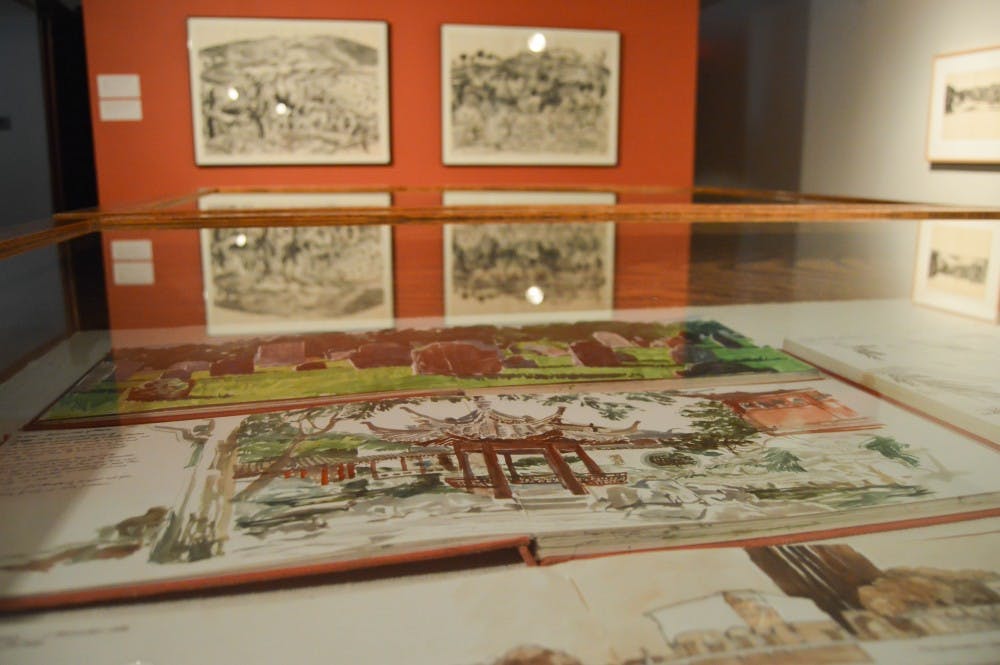Through December 20th, the Harvey & Irwin Kroiz Gallery will be exhibiting seven decades of work from landscape architect and Penn professor Laurie Olin. Titled “Drawing: Laurie Olin,” the exhibit displays how the designer of some of the biggest landscapes in the country perceives and reconstructs his world.
“Drawing: Laurie Olin” is an exhibit of 50 original drawings from Olin’s travels and explorations across the world. They range from the representational to the abstract, from to the interior to the exterior, and from the urban to the pastoral. Many form the basis for studies on a number of his most notable works, such as Bryant Park in New York City, the Washington Monument in D.C., and of course, our very own University of Pennsylvania.
A number of his drawings are reflections of Olin’s own exploration and engagement with the world around him. He would sit surrounded in the landscape that he then brings to paper. For example, in the 1970 drawings of Skid Road residents, the drawings are of people reading newspapers, leaning on a table, or sitting by a bar with a cigarette. What makes his drawings distinct is the absence of background and enclosed details. His figure depictions and landscape sketches often see this type of white space. By leaving information out, his drawings focused solely on the foreground. The narrative of the drawing is in the very process of what he chooses to be the foreground and what to be the background.

Similarly, in Villa Aurelia (2008), he depicts several kinds of trees. Every mark of a tree is unique and distinct, the perspective and spatial relationship so carefully drawn out that the drawing immerses the viewer into the space. “What an architect or a landscape architect does is put stuff in the world; you are projecting something in so you want to carry a knowledge of human experience or a feeling in shaping these spaces,” said William Whitaker, the curator and collections manager of Architectural Archives.
The strong sense of narrative tradition and sensibility found throughout Olin’s drawings was a part of him even before he attended any formal architectural school. Born and raised in Fairbanks, a city in mid–Alaska isolated and surrounded by vast wilderness, Olin drew inspiration from the pages of magazines and syndicated comic strips.

“For me, what I started to understand is a comment Laurie made over lunch one day—‘in Alaska, everybody learns how to tell a story.’ The information that came to you if you grew up in the 1940s and 50s was from popular magazines, in which Laurie found interesting inspirations. People have a tradition of telling stories,” said Whitaker. “As someone who has committed to being a designer and landscape architect, he has a strong sense of making places in the world.”
In 1974, Olin came to Penn to teach at the School of Design, where he is now an Emeritus Professor of Architecture. His drawings show a way he experiences the world, creating a rich archive of his own stories and observations. By sharing his art with us, part of his experience now also becomes all of ours.







